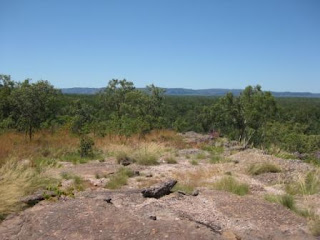







And today, as foreshadowed, we spent the day at the nearby Litchfield national park, a sandstone plateau elevated above surrounding swamps inhabited by crocodiles, very few people, and termite mounds. In the 1500 sq km of the park there couldn't have been more than about 50 human residents, if that!
So, we experienced an almost pristine wilderness of rain forest, waterfalls, dry savannah, upland swamps, fast flowing rivers, escarpments, and grasslands, but saw little in the way of fauna (which largely remained hidden). Perhaps that was lucky, because we avoided snakes and crocodiles and other nasties. However, we managed to spot a bat colony, shoals of fish, and lots of very large spiders in huge webs awaiting prey. We also had a refreshing dip in two swimming holes guaranteed free of crocodiles, though swarming with fish.
The attached photos give some idea of the beautiful landscapes we encountered and their names are serially as follows: Florence Falls, Buley Rockhole, Wangi Falls, termite mounds (no specific name because there are thousands of them), View Westwards, Tolmer Falls, and Table Top Swamp. Actually, the photos are presented last-named to first. The falls were at their most magnificent at the end of the wet season.
AS
.jpg)
.jpg)
.JPG)























